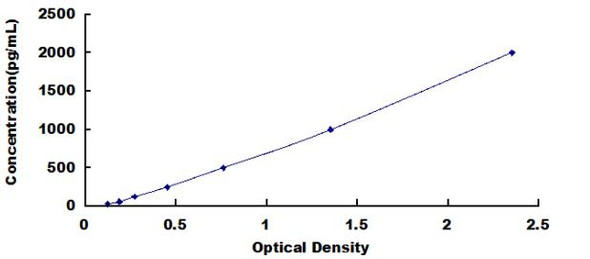Description
| Product Name: | Recombinant Human Transforming Growth Factor Beta-1/TGFB1 |
| Product Code: | RPES6297 |
| Size: | 10µg |
| Species: | Human |
| Expression Host: | HEK293 Cells |
| Synonyms: | Transforming Growth Factor Beta-1, TGF-Beta-1, Latency-Associated Peptide, LAP, TGFB1, TGFB |
| Mol Mass: | 28.5 kDa |
| AP Mol Mass: | 20-30 kDa |
| Tag: | None |
| Purity: | > 95 % as determined by reducing SDS-PAGE. |
| Endotoxin Level: | < 1.0 EU per μg of the protein as determined by the LAL method. |
| Bio Activity: | Testing in progress |
| Sequence: | Leu30-Arg278(Cys33Ser) |
| Accession: | P01137 |
| Storage: | Generally, lyophilized proteins are stable for up to 12 months when stored at -20 to -80°C. Reconstituted protein solution can be stored at 4-8°C for 2-7 days. Aliquots of reconstituted samples are stable at < -20°C for 3 months. |
| Shipping: | This product is provided as lyophilized powder which is shipped with ice packs. |
| Formulation: | Lyophilized from a 0.2 μm filtered solution of PBS, pH 7.4. Normally 5 % - 8 % trehalose, mannitol and 0.01% Tween80 are added as protectants before lyophilization. Please refer to the specific buffer information in the printed manual. |
| Reconstitution: | Please refer to the printed manual for detailed information. |
| Background: | Transforming Growth Factor β-1 (TGFβ-1) is a secreted protein which belongs to the TGF-β family. TGFβ-1 is abundantly expressed in bone, articular cartilage and chondrocytes and is increased in osteoarthritis (OA). TGFβ-1 performs many cellular functions, including the control of cell growth, cell proliferation, cell differentiation and apoptosis. The precursor is cleaved into a latency-associated peptide (LAP) and a mature TGFβ-1 peptide.Disulfide-linked homodimers of LAP and TGF-beta 1 remain non-covalently associated after secretion, forming the small latent TGF-beta 1 complex. Purified LAP is also capable of associating with active TGF-beta with high affinity, and can neutralize TGF-beta activity. Covalent linkage of LAP to one of three latent TGF-beta binding proteins (LTBPs) creates a large latent complex that may interact with the extracellular matrix. TGF-beta activation from latency is controlled both spatially and temporally, by multiple pathways that include actions of proteases such as plasmin and MMP9, and/or by thrombospondin 1 or selected integrins. Although different isoforms of TGF-beta are naturally associated with their own distinct LAPs, the TGF-beta 1 LAP is capable of complexing with, and inactivating, all other human TGF-beta isoforms and those of most other species. Mutations within the LAP are associated with Camurati-Engelmann disease, a rare sclerosing bone dysplasia characterized by inappropriate presence of active TGF-beta 1. |






